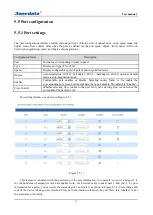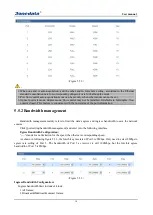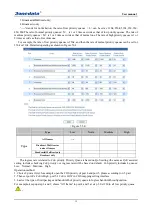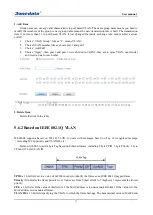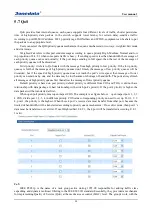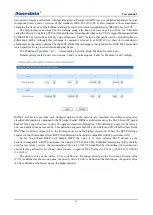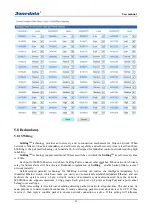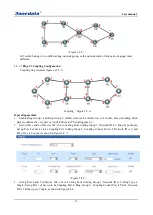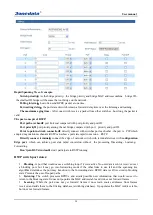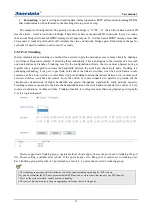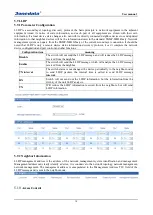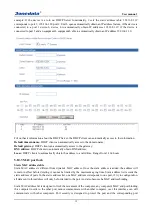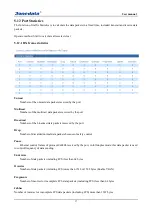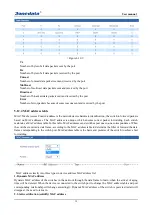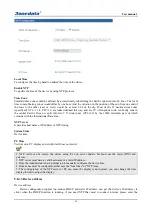
User manual
27
(
Figure 5.8.10
)
3.
Use a wire to connect Port 7 and 8 of Device 107-109 in turn to make a chain. Use a wire to connect Port 7
and 8 of Device 100-103 in turn to make a Single Ring, Then use a wire to connect Port 8 of Device 107 and
Port 7 of Device 109 to normal port of Device 102 and 103. Chain is finished.
1. Port cannot be trunking setting when it is already Ring port.
2. In the same single ring, identity must be consistent, otherwise it will not built a ring and cannot communicate.
3. All ring ports in the VLAN settings must be TRUNK tagged VLAN member, otherwise cannot communicate.
4. To form tangent ring or other complex rings, should pay attention to the ring identity whether is it consistent, different
single ring identification must be different.
5.8.2 RSTP
The first spanning tree protocol was invented in 1985 at the Digital Equipment Corporation by Radia Perlman.
In 1990, the IEEE published the first standard for the protocol as 802.1D, based on the algorithm designed by
Perlman. Subsequent versions were published in 1998 and 2004, incorporating various extensions.
Although the purpose of a standard is to promote interworking of equipment from different vendors, different
implementations of a standard are not guaranteed to work, due for example to differences in default timer settings.
The IEEE encourages vendors to provide a "Protocol Implementation Conformance Statement", declaring which
capabilities and options have been implemented, to help users determine whether different implementations will
interwork correctly.
Also, the original Perlman-inspired Spanning Tree Protocol, called DEC STP, is not a standard and differs from
the IEEE version in message format as well as timer settings. Some bridges implement both the IEEE and the
DEC versions of the Spanning Tree Protocol, but their interworking can create issues for the network
administrator, as illustrated by the problem discussed in an on-line Cisco document.
In 2001, the IEEE introduced Rapid Spanning Tree Protocol (RSTP) as 802.1w. RSTP provides significantly faster
spanning tree convergence after a topology change, introducing new convergence behaviors and bridge port roles
to do this. RSTP was designed to be backwards-compatible with standard STP.While STP can take 30 to 50
seconds to respond to a topology change, RSTP is typically able to respond to changes within 3 × Hello times
(default: 3 times 2 seconds) or within a few milliseconds of a physical link failure. The so-called Hello time is an
important and configurable time interval that is used by RSTP for several purposes; its default value is 2 seconds.
Standard IEEE 802.1D-2004 incorporates RSTP and obsoletes the original STP standard Select RSTP function in
rapid ring network interface as follows:

